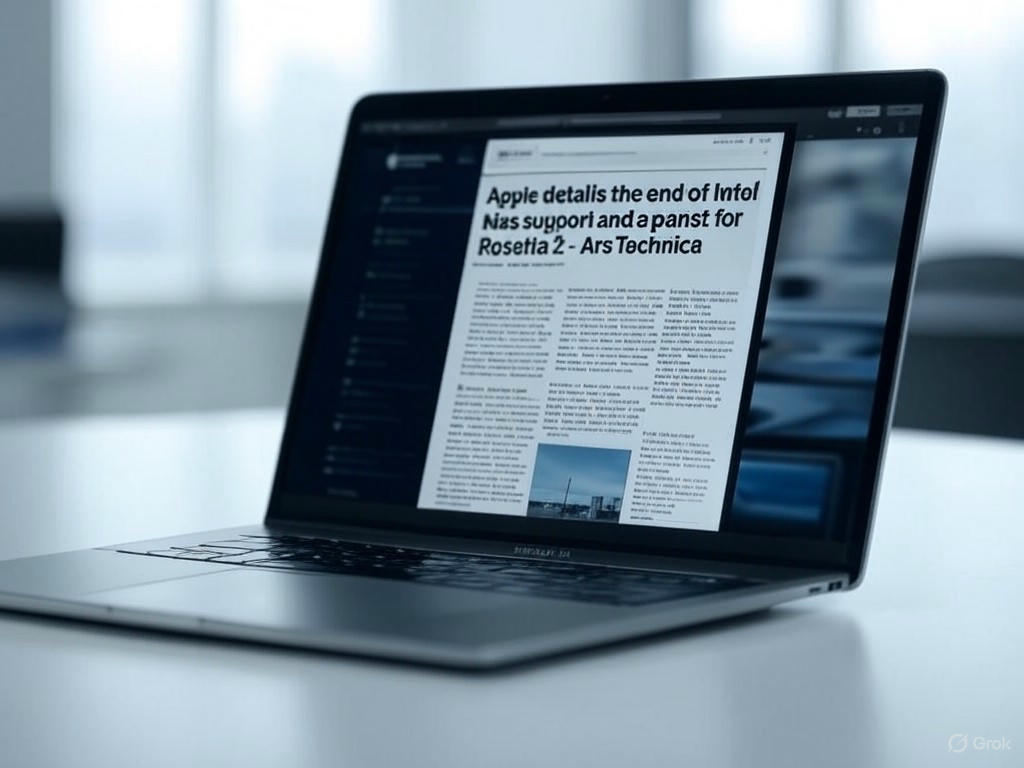Apple’s Shift to Silicon: The Sunset of Intel Mac Support and Rosetta 2
Apple has long been a trailblazer in the tech world, and its transition from Intel processors to its own Apple Silicon chips marks one of the most significant shifts in its history. This move, which began in 2020 with the introduction of the M1 chip, promised unparalleled performance and efficiency. However, as Apple continues to refine its ecosystem, the company has recently shared crucial updates regarding the future of Intel-based Mac support and the Rosetta 2 translation tool, signaling a definitive end to an era.
For years, Apple relied on Intel processors to power its Mac lineup, delivering reliable performance for professionals and casual users alike. But with the advent of Apple Silicon, the tech giant has been steadily moving away from Intel architecture, focusing on a unified system where hardware and software are tightly integrated. This transition hasn’t been without its challenges, especially for users and developers who rely on apps designed for Intel-based systems. To bridge this gap, Apple introduced Rosetta 2, a powerful translation layer that allows Intel apps to run seamlessly on Apple Silicon Macs. While this tool has been a lifesaver for many, Apple has now confirmed that Rosetta 2 is not a permanent solution. The company is preparing to phase it out, aligning with its broader goal of fully embracing its custom silicon architecture.
The decision to sunset Rosetta 2 and end support for Intel-based Macs is a clear indication of Apple’s confidence in its Silicon chips. The company has already transitioned its entire Mac lineup to Apple Silicon, with devices like the MacBook Pro and Mac Studio showcasing remarkable speed and energy efficiency. As more developers optimize their apps for the new architecture, the need for Rosetta 2 diminishes. Apple’s announcement serves as a reminder to users and software creators alike that the clock is ticking on Intel compatibility. While no specific timeline for the complete phaseout has been set, the message is clear: the future of macOS lies in native Silicon apps, and those clinging to older systems may soon face compatibility hurdles.
This shift also raises questions about the long-term implications for Apple’s user base. Professionals in industries like video editing or software development, who may still rely on legacy Intel apps, will need to adapt quickly. Apple has encouraged developers to prioritize native app development, offering tools and resources to ease the transition. Meanwhile, users are advised to check for Silicon-optimized versions of their essential software to avoid disruptions down the line.
As Apple forges ahead with its Silicon vision, the end of Intel Mac support and Rosetta 2 marks a pivotal moment in the company’s journey. It’s a bold step toward a future where Apple controls every aspect of its ecosystem, promising innovation but also demanding adaptation. For now, the tech giant is paving the way for a new standard, and users must prepare to follow suit or risk being left behind in a rapidly evolving digital landscape.


